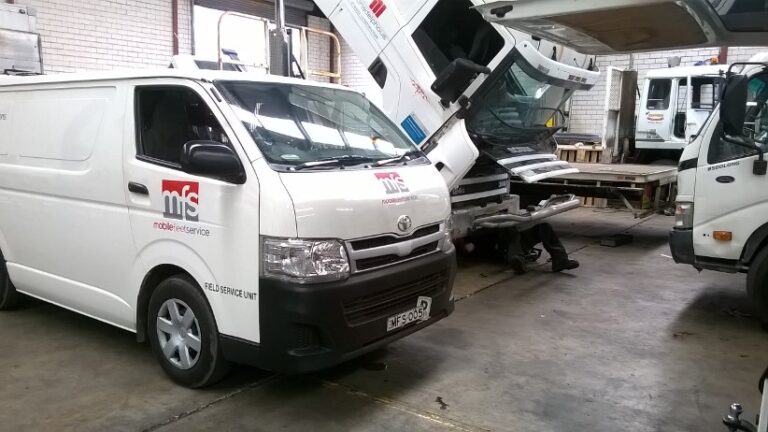– By Caroline Falls –
For anyone in fleet management it’s easy to see the benefit of having a maintenance service onsite but not everyone can afford to run their own workshop so mobile servicing may be an option.
“Certainly, the biggest benefit of mobile servicing is reduced vehicle downtime,” said Martin Cuthbert, managing director of Silverwater, NSW- based Mobile Fleet Service (MFS).
“We specialise in tool-of-trade fleets such as air-conditioner mechanics and that kind of thing so if their vehicles are off the road it costs money,” said Cuthbert, adding to be competitive with dealerships their pricing is similar at about $200 a service. “The benefit is you are reducing the downtime dramatically.”
MFS started about 25 years ago in Sydney and has witnessed a dramatic increase in the number of mobile maintenance service businesses being used by eets and consumers. But Cuthbert says it’s not so easy today with the investment required to buy the equipment to service a modern vehicle.
“Initially, there wasn’t much set up cost to enter, so there were a lot a y by nighters” says Cuthbert.
Today, there’s huge logistical costs in having the right equipment and supplies to service the modern vehicle, including carrying as many as 12 different engine oils compared with two a decade ago. This is because original equipment manufacturers are changing to synthetics oils to meet stricter emission standards.
MFS has 10 vehicles on the road servicing fleets in the Sydney metropolitan area and their customers include large national businesses such as Telstra, Optus and Wormald. And a lot referrals come via eet management companies like Custom Fleet, LeasePlan and Toyota Fleet Management because they understand the increased productivity of bringing the workshop to the asset.
Cuthbert said a lot of planning is involved in servicing eet companies. “We look at the history of the vehicle, we look at what’s been done previously, we look at what it may be due for, we generally carry most parts on board, we have jacks and stands in the mobile vehicle, we carry spill kits in case of oil spills, and we carry all sorts of safety equipment.”
After a quarter of a century of experience in the eet maintenance industry Cuthbert noted some of the big changes he’s seen:
- Service intervals have expanded on a lot of vehicles from 10,000 km to 15,000 km, and some out to 20,000 km, largely thanks to the advent of sophisticated synthetic engine oils. This has helped keep a lid on the annual cost of servicing a vehicle today, so has little changed from a decade ago.
- The advent of Google and You Tube means that any professional driver can look up how to do basic vehicle checks. “You don’t have to be a licensed motor mechanic to check tyres or oil and it’s something any good professional driver should do. We live in an age of information technology where everything is checkable, so if you don’t know how to do something, it’s pretty accessible.”







